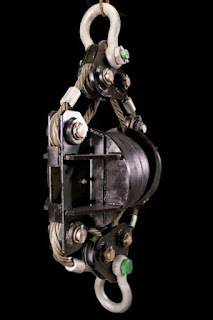From small facilities for launching pleasure boats to large docks that load and unload ocean-going vessels for carrying on or offloading freight on ocean-going ships, sheet pile walls are widely used in waterfront structures. A common construction in harbors involves the construction of a pier with two rows of sheet pilings, and in between that, space is filled with earth and paved, creating a pier that juts into the harbor.
Furthermore, sheet piling is also used to prevent beach erosion, stabilize the slope of the ground, especially along roads, shore up walls in trenches and other excavations, and build cofferdams. A wall under about 3 m in height is often cantilevered; however, for walls that are higher than 3 m in height, the wall is usually anchored using at least one anchor. The result is a wall that is a sheet-pile wall or a bulkhead that is anchored to a sheet-pile wall.
This article discusses the sheet piles in detail and their method.
About Sheet piles
A sheet pile consists of a thin piece of material interlocked with its edges to create a wall or barrier that is structurally sound and often weatherproof.
As far as materials go, they are typically made from steel, but there are also wood alternatives, precast reinforced concrete, as well as certain types of plastic that can also be used. This type of pile is a steel sheet pile made from sustainable recycled metals, and where soil chemistry dictates that the pile should have an anticorrosive coating, they are often sprayed with it.
The most commonly used form of the pile is steel sheet piles, a very versatile type of pile. It is possible to weld or bolt them together vertically to provide a greater length and depth, should this be required. Driving causes a lot of pressure on them, so they provide the best strength option for the weight they weigh.
Different types of sheet piles
Steel sheet pile
It comes in a variety of cross-sections and shapes. In addition to hot-rolled sheet piles, cold-rolled and cold-formed sheet piles can also be used. Several corrosion prevention measures, such as coatings and cathodic protection measures, can increase the durability of steel sheet piles. The most common form of sheet pile is steel pile, which can be welded or bolted to increase its length and is well suited for high driving stress, and excellent water-tightness, and can be welded to increase their driving stress.
Vinyl sheet pile
Bulkheads, seawalls, and cutoff walls can be made using this alternative to steel sheet pilings for various reasons. In addition to being superior to other materials such as concrete and wood, they are also cost-effective. Among the main advantages of vinyl sheet piles is their excellent corrosion resistance when exposed to seawater, where they don't oxidize.
Wooden sheet pile
Used in excavation works and temporary structures, they have braced sheetings. It should be treated with some preservatives for permanent structures above the water table.
Method of sheet piling
As the pile progresses, it should be monitored carefully and stopped immediately after the pile penetrates the soil before progressing to the next pile. Some of the piles adjacent to each other cannot penetrate the design depth in some cases.
This is when it should be attempted to remove the obstacle by either partial excavation or to use of a water jet. Depending on the design requirements, an acceptable number of 'under-driven' sheet piles is possible. Still, this number depends on the specific quantity of piles to be installed.
Guide controls are the best way to counteract this. The use of piles in panels is one method of driving piles. As a result, the piles are pitched and driven into the ground at either end of a panel of piles to reach partial or full penetration. This means that the 'bookended' piles that anchor the panel to the ground will support the panel during driving to the final position of the panel. As the next panel is constructed, the pair left on the end serves as the support for the next panel, which follows. As another method of supporting and positioning sheet piles during the driving process, the sheet piles can also be attached to trestles or whalings. The installation of sheet piles is usually done with vibration hammers, although impact hammers are sometimes used if the soils are too hard or dense.
When vibrations are a concern at certain sites, it is possible to push the sheets into the ground hydraulically to prevent them from moving. The sequence of events is as follows:
Structure to be built on-site soil
Pile the sheets in a drive
A system of anchors and backfill up to the wall height is installed on the anchor level.
Wall front dredged.
Sheet pile advantages
A steel sheet pile has the main advantage of applying to various engineering projects.
Installing steel sheet piles requires less time than reinforced concrete for retaining walls. In reinforced concrete, curing is necessary before pouring the concrete.
A sheet pile is also usually lighter than a reinforced concrete pile, making it easier to transport.
Moreover, material quality is not affected during transport, as with concrete, which may be affected by deterioration during transportation.
The steel sheet piles recovered from temporary excavation protection structures can be used again for future construction projects, providing a way to reduce the carbon footprint of construction. Sheet piles made of steel are also well suited to permanent structures. This is due to its ability to withstand high bending stresses.
Conclusion
There is an interlocking design to sheet piles. During excavation, they are installed sequentially along the perimeter. They can be used together to form a wall that can provide ground support either permanently or temporarily, along with anchors that provide extra lateral support for a wall with anchors.
Keeping our focus on customer service, HPSI offers sheet pile drivers for sale at competitive prices. We strive to provide high-quality, reliable, and long-lasting equipment.





